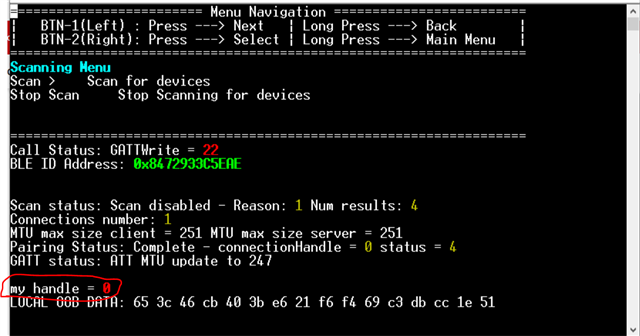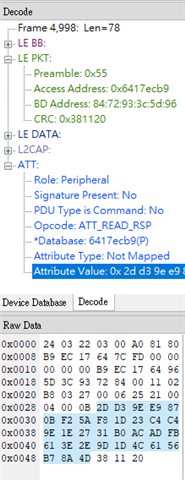Tool/software:
Hi TI,
I am using two CC2340R5 board and connect to each other, And set the Max Size of PDU for both devices to 240 in syscfg like the image below,
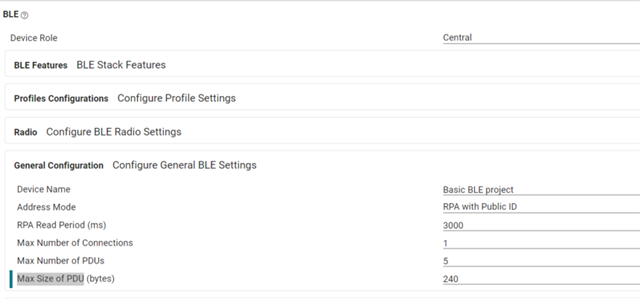
Later, I used a sniffer to check the content of the LL_LENGTH_REQ sent from the Central and found that the TX Max is only 27 bytes (the minimum PDU length as specified by SIG). Are there any other settings that need to be modified?
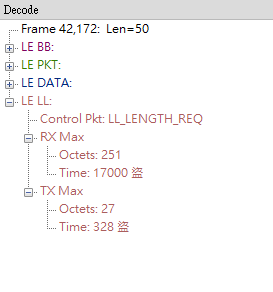
LL_LENGTH_REQ from Central
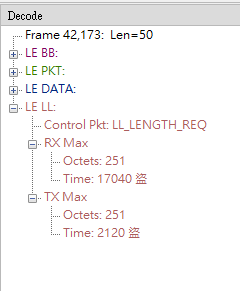
another LL_LENGTH_REQ from Peripheral
the SDK I use is simplelink_lowpower_f3_sdk_8_10_01_02



